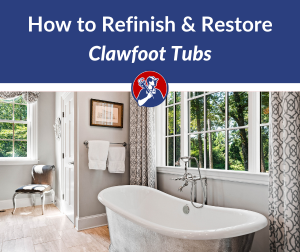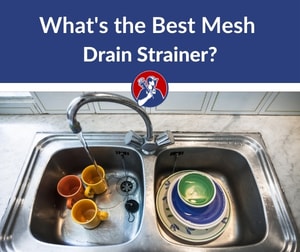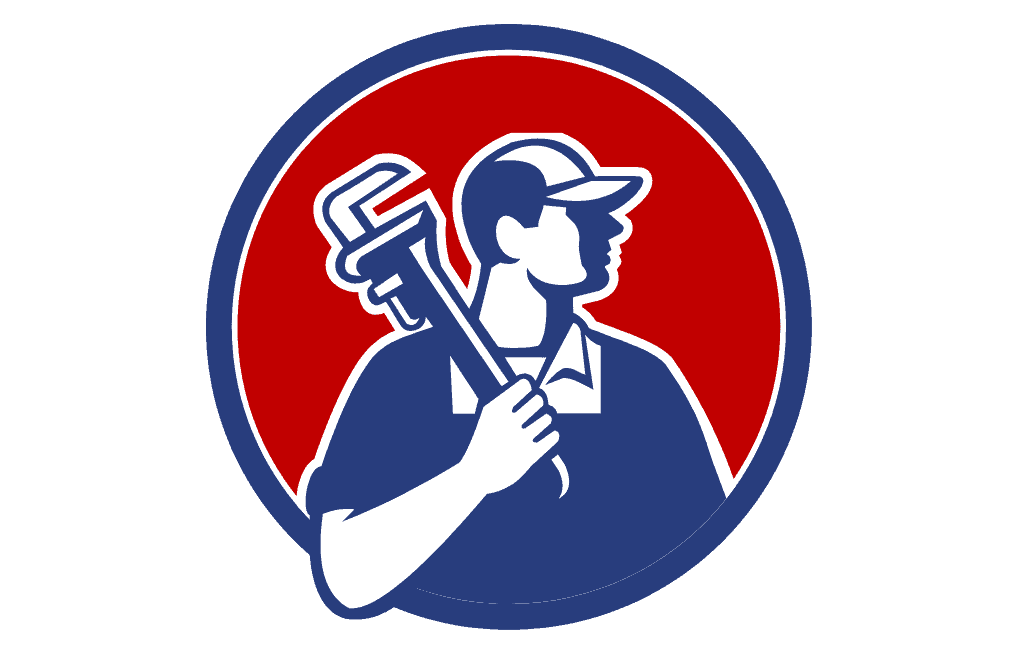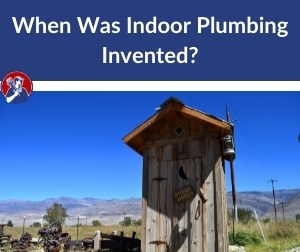
A large majority of the world enjoys indoor plumbing that includes a modern bathroom with a flushing toilet.
While home plumbing is considered a modern invention, innovative societies used introductory plumbing elements from the onset of history to get us to the comforts of today.
Are you interested in learning more about when plumbing was invented?
In this PlumbingNav guide, we will cover:
- Timeline of the history of plumbing
- When modern plumbing was invented
- Plumbing and health
- Increasing plumbing efficiency
| What's In This Guide? | |
|---|---|
|
|
|
Plumbing History Timeline
To appreciate modern plumbing, it’s important to understand the history of plumbing first.
See the following timeline of monumental moments in plumbing history.
4000 – 3000 B.C. – In early India, people used simple, copper pipes to transport water from the Indus River to the nearby palace.
2500 B.C. – Egyptians used copper pipes for basic irrigation and sewage control. They even created primitive bathrooms in the pyramids.
500 B.C. – 450 A.D. – The famous public baths in ancient Rome relied on the most sophisticated aqueduct system so far, mostly made up of lead pipes, that included underground plumbing.
1664 A.D. – The Sun King, King Louis XIV of France, demanded his subordinates find a way to bring water into the palace for his fountains. So, they used cast iron to bring water into the palace from 15 miles away. This extended the length of earlier-known systems significantly.
1728 A.D. – America created an underground sewage system to eliminate sewage smell, as people started to complain.
1830 A.D. – The first public water line in America brought water to fire stations to help them put out the increasing number of fires occurring.
1857 A.D. – In New York, Joseph Gayette gets credit for the invention of toilet paper when he attempts to sell “medicated paper for the water closet.” However, his toilet paper didn’t generate as much interest as hoped. Seth Wheeler patented an “improvement in wrapping paper” just a few years later.
1861 A.D. – Thomas Crapper invented the modern toilet as we know it, and King Edward VIII hired him to install toilets in the palace.
1939 A.D. – Plumber Al Moen allows people to control hot and cold water with one knob thanks to his new invention – the single-handed faucet.
1940s A.D. – The Uniform Plumbing Code goes into effect in America, and indoor plumbing, such as a toilet and water heaters, starts to become popular in average homes.
1960s A.D. – PVC pipes and other plastic pipes grow in popularity to act as a safe solution for the copper shortage.
1990 A.D. – The Americans With Disabilities Act requires public buildings to create facilities that accommodate the needs of people with disabilities.
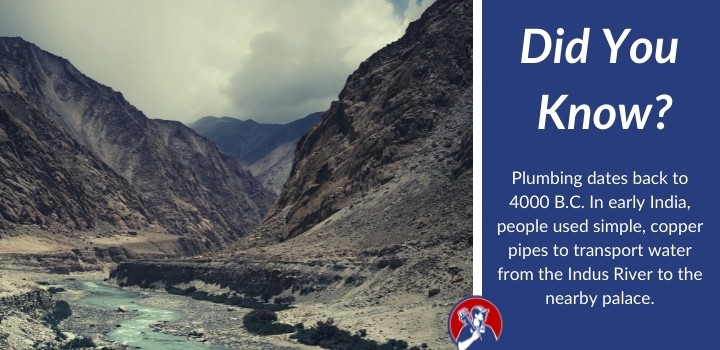
Early Plumbing
Before standard modern plumbing, only rich people enjoyed indoor plumbing. In fact, only 1% of homes in America had indoor plumbing in 1920.
Getting Water Into the Home
In prehistoric civilization, people didn’t have access to water in the home for cooking and cleaning. People needed to walk to the local river or well with buckets to obtain water. Luckily, we learned how to use pipes to transport water to people’s homes, starting in urban areas and working out.
When we figured out how to bring water into the home, we had to learn how to heat it with the invention of water heaters. Water heaters became more and more common throughout the 20th century until most people started to use them.
What Did People Use Before The Toilet?
In prehistoric times, people went to the bathroom with minimal privacy behind bushes and wiped with leaves, moss, sponge, ceramic, or whatever they could find at the moment (even their own hand).
As nomads started to change their ways and stay put, they used holes in the ground. This kept the waste in one location, but it made things smell awful.
People with some money may have been able to afford a chamber pot, which added a bit of convenience. But, many times, they were dumped out the window without much concern for who may be underneath. Chamber pots did not improve the smell.
Eventually, people developed the outhouse. Outhouses refer to simple buildings where people relieve themselves in a deep hole. It added a bit of privacy and reduced health concerns by containing waste out of the way of the citizens. However, employees needed to clean the outhouses regularly, and I guarantee they didn’t get paid what they should have.
Finally, early sewage systems and the flushing toilet come into play. The flushing toilet takes waste and transports it through the sewer system into larger sewage pipes and to a proper drainage location.
More and more homes made the switch to flushing toilets in an indoor bathroom until it became the common method.
Eventually, most homes had complete indoor plumbing systems, that include hot and cold running water, a shower, and a flush toilet in the water closet.
Learn more about sanitation in ancient Rome:
The History of Early Plumbing Systems of Rome
In the Roman Empire, there were hundreds of miles of aqueducts that spread far and wide across the land. These brought fresh water from the mountains into the cities, which was like plumbing for the Romans. The water gently ran into colossal holding containers or fountains. Romans could then easily retrieve water that was carried from 60 miles away.
These impressive structures were built out of stone and other hard elements, which made them very durable. They were so well made that some are still in use today.
Aqueducts were helpful to the Romans for more than just transporting water. They kept their people healthy. The Romans were able to drink the water, bathe and water their crops. Some of the wealthy Romans had plumbing inside their homes. They also carried water that wasn’t clean and sewage out of the cities, which was a great help to the people by preventing diseases.
They even lined an entire river bed with stones turning it into a giant drain called the Cloaca Maxima. The Roman aqueducts were greatly valued and amazing structures!
Modern Plumbing
Plumbing refers to any system that transports clean water using the natural properties of gravity and pressure.
Most people receive water from the local main water line. However, other people choose to get water from a well on their property. Main water lines filter the water for you and provide a much more convenient option.
However, well water gives you more control over the quality of your water, self-sufficiency, and you won’t need to pay a water bill.
The main aspects of plumbing include:
- Sewage systems and toilet
- Cold water lines
- Hot water lines
- Drainage system
Your modern plumbing system consists of sewage lines that remove wastewater, cold water supply lines that bring fresh water inside your home, hot water supply lines that transport warm water throughout your home, and drainage systems that allow excess water to escape your home, preventing water damage and mold development.
All sinks, showers, tubs, hoses, and appliances connect to the main water supply with a water pipe that will fasten to any other necessary pipes using a plumbing fixture.
American Access to Modern Plumbing
Indoor plumbing became more and more popular up until today when almost all U.S. homes have adequate indoor plumbing due to the building codes and other laws put into place to ensure citizens remain sanitary and healthy. This is one reason we recognize world plumbing day each year.
See the following percentage of American homes without a complete indoor plumbing system by decade according to the U.S. Census:
- 1940 – 45%
- 1960 – 16.8%
- 1970 – 6.9%
- 1980 – 2.7%
- 1990 – 1.1%
Modern Plumbing Pipe Materials
Manufacturers make most pipes out of copper, plastic (PVC and PEX), and steel.
See the benefits and drawbacks to the different materials to understand why one type of pipe works best in a certain situation:
- Copper pipe – copper piping resist corrosion, allowing them to last the longest, but they come with the highest price tag.
- Plastic pipe – plastic pipes come with a low price tag, but can’t handle hot temperatures.
- Steel pipe – common in many older homes due to its strength, copper pipes ultimately replaced galvanized steel pipes.
On occasion, you may run across a lead pipe or cast iron pipe, but the alternatives provide benefits that all but made these two materials obsolete. Iron rusts easily, leaching lead in your drinking water or potable water, leading to health problems.
Health-Related Issues Caused By Inadequate Indoor Plumbing
According to the Centers for Disease Control in 2017, 785 million people around the world don’t have basic indoor plumbing or sanitation, and 884 million people do not have clean drinking water. Furthermore, a quarter of the world’s population (2 billion people) doesn’t have access to adequate sanitation.
Unfortunately, these problems can lead to serious health conditions and even death.
Some conditions that can result from inadequate plumbing include:
- Cholera (95,000 deaths annually)
- Typhoid fever (129,000 death annually)
- Parasitic worms (819 million people infected with Ascaris lumbricoides)
- Trachoma (10 million people currently with visual impairment)
Estimates claim that proper plumbing can reduce the global disease burden by 9% and global deaths by 6%.
While generally considered a problem for developing countries, developed countries can experience health concerns due to poor plumbing, too, as demonstrated by the water coming into the homes in Flint, Michigan.
Increasing Plumbing Efficiency
The future of plumbing revolves around efficiency.
In order for plumbing to become more efficient, we need to focus on preventing heat from escaping, preventing leaks, using less water, and improving monitoring.
Retaining Heat
Heat can escape through inefficient pipes and appliances.
To combat this, replace old and deteriorating pipe materials with high-end pipes that retain heat. If it’s not time to replace the pipes yet, you can try placing insulation over the pipes.
Another way to prevent heat from escaping is to use a unit that doesn’t store the warm water in a storage tank, forcing it to constantly work to keep the water hot. The most efficient costs result from using tankless water heaters, including super-efficient condensing gas tankless water heater units.
If you have a storage-tank water heater, use blankets designed for water heaters and keep up on maintenance.
Heat pump water heaters use a storage tank but maintain very high-efficiency ratings thanks to geothermal technology for people who can’t easily make the move to tankless.
Preventing Leaks
The average American family creates 9,400 gallons of water waste a year in leaks alone. This proves just how much that small leak adds up over time.
To prevent water waste due to leaks, tackle the problem immediately. You can fix tiny leaks in easily accessible locations such as toilets and plumbing fixtures. Also, be on the lookout for larger problems such as a leaking water heater or slab leak which may not present themselves in obvious or immediate ways.
For larger problems, you can use a sewer camera locator, or you may need to call a plumber to provide run a hydrostatic plumbing pressure test and replace the damaged pipes.
Furthermore, get your pipes inspected by a plumber annually before winter, especially if they have been in place for several years.
Reducing Water Usage
Each American uses an average of 82 gallons a day at home. That’s a lot of water!
Install low-flow showerheads, faucets, and appliances to reduce how much water your fixtures produce. Products with the government-approved WaterSense sticker use 20% less water than traditional fixtures. These help to save water, especially in the bathroom.
The Low Flow Toilet
Indoor toilets can constitute up to 24% of water use in your home. However, attempts to lower that number are being made by requiring new construction to use low flow toilets.
Old toilets could use up to 3.5 gallons per flush. Now, toilets must not exceed 1.6 gallons per flush, with WaterSense products using even less.
If you have old toilets, consider upgrading to something a little more modern. You don’t necessarily need to go with the most efficient models that some people don’t find as comfortable.
Smart Plumbing Technology
One of the main aspects of future plumbing systems involves smart technology. Appliances, such as tankless water heaters and washing machines, use connectivity technology to allow homeowners to easily control and monitor devices from anywhere, allowing them to use appliances in the most efficient way possible.
Get Fast, Local Plumbing Service
Connect with an expert plumber in your local area to tackle any job – big or small. Find help with leaks, clogs, or full installations.
Select your service category on the form, provide your details, and an expert plumber will be in touch!
Plumbing Navigator is an informational site that connects visitors with local plumbers but does not directly provide plumbing services or operate as a licensed company.
Final Thoughts On When Was Plumbing Invented
It appears that some form of plumbing has existed since the Roman baths of ancient times.
We continue to improve products and technology in regards to plumbing and the water closet with an emphasis on providing clean drinking water and sanitation to everyone, especially in developing countries, and improving efficiency.
Meet Your Plumbing Navigator

About Plumbing Navigator
We’re passionate about all things plumbing, and love sharing tips, “how-to”, and reviewing the latest products to help make your project a success!
Learn More Plumbing Tips
Want to tackle more plumbing projects? Check out these helpful guides!


